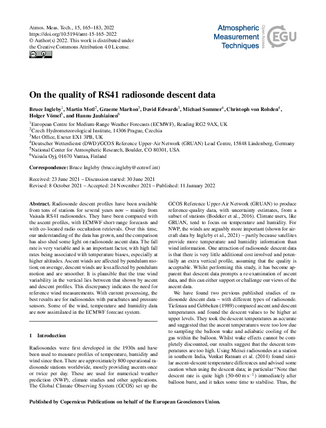AMT has published the paper "On the quality of RS41 radiosonde descent data" by Ingleby et al. (https://doi.org/10.5194/amt-15-165-2022).
Short summary
Radiosonde descent data could provide extra profiles of the atmosphere for forecasting and other uses. Descent data from Vaisala RS41 radiosondes have been compared with the ascent profiles and with ECMWF short-range forecasts.
The agreement is mostly good. The descent rate is very variable and high descent rates cause temperature biases, especially at upper levels. Ascent winds are affected by pendulum motion; on average, the descent winds are smoother.
